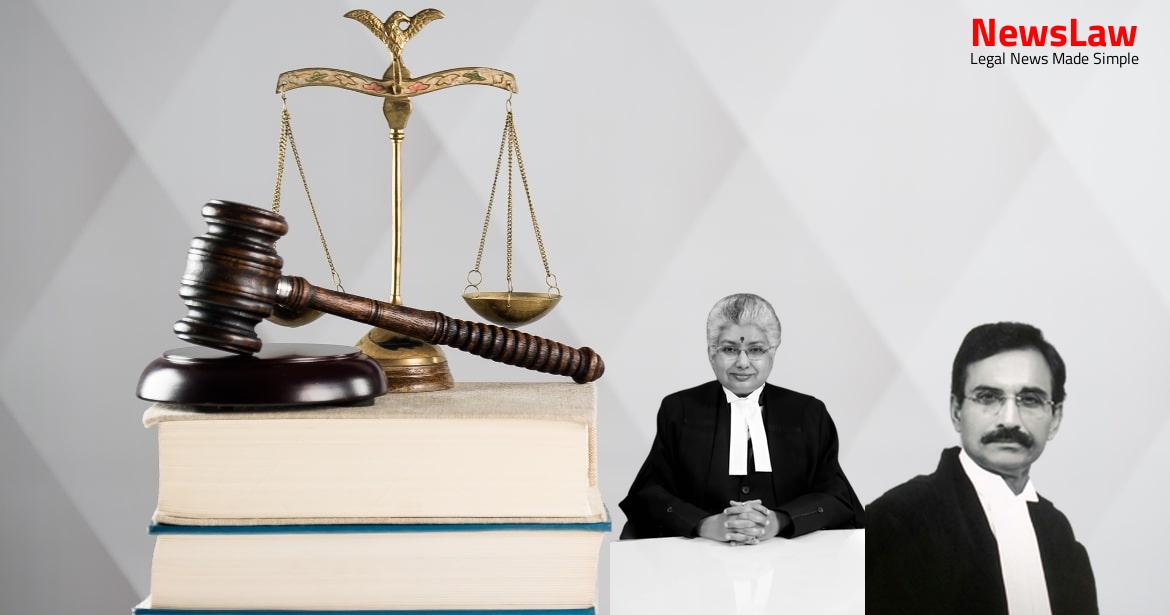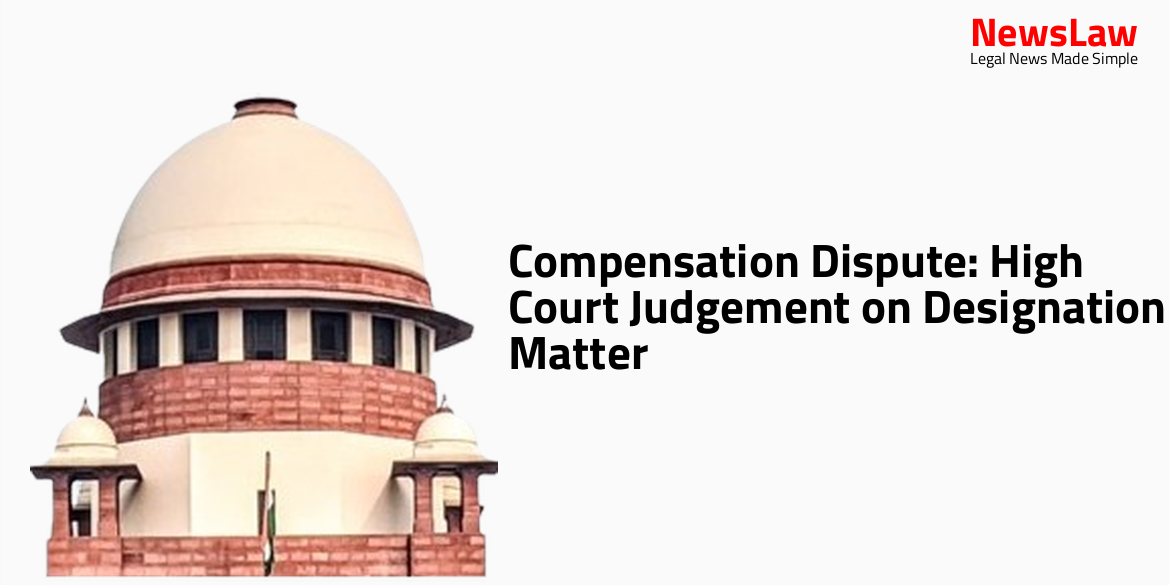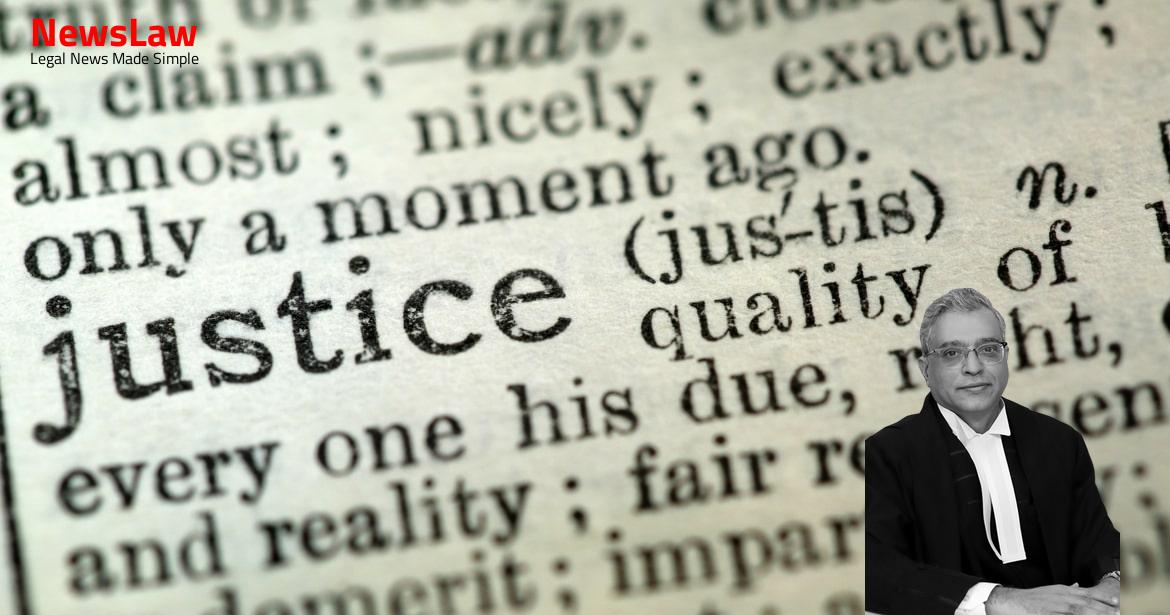Explore a detailed legal analysis of a recent court judgment pertaining to trademark infringement. The case delves into the complexities of statutory interpretation, highlighting the importance of understanding trade mark laws in the context of intellectual property protection. Discover key insights into the court’s approach to interpreting legal statutes in cases of trademark infringement.
Facts
- The respondents-defendants resisted the claim of the appellant-plaintiff by filing their written statement.
- Leave was granted for further proceedings.
- It was discovered that the respondents-defendants were copying the appellant-plaintiff’s trade mark ‘RENAISSANCE’ along with its stylized representation, signage, business cards, and leaflets.
- The products being copied were imprinted with the appellant-plaintiff’s trade mark ‘RENAISSANCE’.
- The High Court observed that none of the customers had claimed that the respondents-defendants were serving non-vegetarian food or liquor.
- The witness of the appellant-plaintiff admitted that the respondents-defendants only serve vegetarian food without liquor and were operating hotels exclusively for serving devotees of Satya Sai Baba.
- The evidence showed that the respondents-defendants did not take unfair advantage or harm the distinctive character of the appellant-plaintiff’s trademark.
- The High Court concluded that there was no infringement of the trademark and allowed the appeal of the respondents-defendants, overturning the judgement and decree of the trial court.
- The appellant-plaintiff subsequently appealed to the higher court against the decision of the High Court.
Also Read: Presumption of Genuine Endorsements in Cheque Case
Issue
- The trial court partially decreed the suit by restraining the respondents-defendants from using the trade mark ‘SAI RENAISSANCE’ or any other deceptively similar mark in relation to printed matter, periodicals, books, etc.
- The respondents were also restrained from opening, operating, or dealing in hospitality services under the mark ‘RENAISSANCE’ or any deceptively similar mark, including on the internet.
- The trial court rejected the claim for damages by the appellant-plaintiff.
- The respondents-defendants appealed to the High Court, challenging the decision.
- The High Court noted the lack of evidence for a trans-border reputation of the appellant-plaintiff and observed the difference in standards between the appellant’s 5-star hotel and the respondents’ hotel.
Also Read: Medical Negligence and Compensation: A Landmark Decision
Arguments
- The appellant-plaintiff claimed to have established a hotel and convention center in Mumbai and Goa.
- The appellant-plaintiff owns the registration for the domain name www.renaissancehotels.com and conducts worldwide advertisements and promotional activities.
- The appellant-plaintiff holds registrations for the trade marks ‘RENAISSANCE’ in India for various services under different classes.
- The appellant-plaintiff discovered that the respondents-defendants were using the name ‘SAI RENAISSANCE’ for their hotels, incorporating the well-known trade mark ‘RENAISSANCE’.
- The appellant-plaintiff conducted investigations and sought legal advice regarding the violation of its intellectual property rights.
- The High Court observed that no evidence was presented to prove that the respondents-defendants were exploiting the appellant-plaintiff’s trade mark.
- A judgment from the Kerala High Court regarding a similar case was deemed not applicable to the current situation by the High Court.
- The respondents-defendants claimed their use of the term ‘RENAISSANCE’ was in honor of Sri Sai Baba and Sri Puttaparthi Sai Baba.
- The appellant-plaintiff argued that the respondents-defendants were liable for trade mark infringement under Section 29 of the Trade Marks Act, 1999.
- The High Court was criticized for not considering the infringement of the appellant-plaintiff’s registered trade mark despite acknowledging the use of ‘RENAISSANCE’ by the respondents-defendants.
- The respondents-defendants argued that ‘RENAISSANCE’ is a generic word and cannot be exclusively claimed as a trade mark in India.
- The respondents-defendants stated their devotion to Sri Sai Baba and Sri Puttaparthi Sai Baba in defense of their use of the term ‘SAI RENAISSANCE.’
- The High Court was accused of incorrectly applying the test of deception or confusion in an infringement case where the defendant’s trade mark is identical to the plaintiff’s trade mark.
- Respondents-defendants did not provide non-vegetarian food and alcoholic drinks to customers.
- High Court recognized the difference in customer classes catered by the appellant-plaintiff and respondents-defendants.
- Appellant-plaintiff and respondents-defendants were catering to different classes of customers with different services.
- The use of term ‘SAI RENAISSANCE’ was justified by the respondents-defendants.
- Legislative history of trade mark laws in India discussed.
- The term ‘RENAISSANCE’ is argued to be a generic English word by the respondents-defendants.
- Respondents-defendants claim the appellant-plaintiff acquiesced to their use of the mark due to a long time gap before filing suit.
- The suit’s maintainability was questioned by respondents-defendants due to appellant-plaintiff not being a legal person.
- Explanation given for adopting the name ‘SAI RENAISSANCE’ for the hotel.
- Argument made for honest concurrent use of the mark ‘SAI RENAISSANCE’ under Section 12 of the Act.
- Claim that ‘RENAISSANCE’ is not a coined word or an inventive mark.
- Assertion that the appellant-plaintiff’s mark ‘RENAISSANCE’ is subject to rectification proceedings.
Also Read: Remand of Writ Petition for Restoration and Decision on Merits
Analysis
- The High Court relied on Section 30(1)(b) of the Act in the impugned judgment.
- The appellant-plaintiff’s trade mark ‘RENAISSANCE’ is registered in Class 16 and Class 42, while the mark ‘SAI RENAISSANCE’ used by the respondents is similar.
- The High Court erred by considering only clause (c) of sub-section (4) of Section 29 of the Act.
- The High Court failed to recognize the importance of textual and contextual interpretation in statutory rights cases.
- The High Court’s decision to vacate the injunction based on delay and laches was deemed incorrect.
- The Act needs to be interpreted in its entirety, considering the scheme and objectives behind its enactment.
- Reliance on specific case laws such as Neon Laboratories Limited, Khoday Distilleries Limited, and Nandhini Deluxe were found to be misplaced in this context.
- The misinterpretation of Section 29(2)(c) led to erroneous conclusions by the High Court.
- Key principles of interpretation were overlooked by the High Court, impacting the judgment on infringement and passing off actions.
- The judgment of Midas Hygiene Industries (P) Limited was misapplied in the present case.
- The High Court’s focus on the reputation of the trade mark and confusion among consumers was deemed irrelevant in the given context.
- The summary highlights the discrepancies in the interpretation of the Act and various cases cited in the judgment.
- Courts have emphasized on the importance of reading the entire section of a statute together without omitting any part.
- Inconsistencies were pointed out in the interpretation of causes of action and right to relief in suits for passing off and infringement of a registered trademark.
- The distinction between passing off and infringement actions was highlighted, emphasizing the statutory nature of infringement actions and the common law nature of passing off actions.
- The court reiterated the standards for infringement, stating that similarity between trademarks can lead to a presumption of violation without the need for further evidence.
- The court emphasized that in cases of infringement, the focus is on whether the defendant’s mark is identical or a colorable imitation of the plaintiff’s, disregarding differences in the packaging, get-up, or pricing of the goods.
- The statutory protection in infringement cases is absolute, and a mark resembling a registered mark to the extent of causing confusion constitutes infringement.
- Section 29 of the Trade Marks Act deals with the infringement of trade marks.
- A registered trade mark is infringed when a person who is not the registered proprietor or a permitted user uses a mark identical or deceptively similar to the registered trade mark in a manner that could cause confusion.
- The court shall presume confusion on the part of the public in cases where the mark is identical to the registered trade mark and covers similar goods or services.
- Infringement also occurs when a mark is used in relation to goods or services not similar to those for which the trade mark is registered, taking unfair advantage of the registered trade mark’s reputation.
- Using a registered trade mark as part of a business name or trade name is also considered infringement.
- Various actions like affixing the mark to goods, offering goods for sale under the mark, using the mark on business papers or in advertising, can constitute infringement.
- Infringement also includes applying the registered trade mark to materials intended for labelling or packaging without authorization, and advertising that is detrimental to the trade mark’s reputation.
- The use of registered words spoken or visually can also infringe the trade mark.
- Section 30 sets limits on the effect of a registered trade mark to prevent unfair advantage or detriment to the mark’s character or repute.
- The validity of a registered trade mark is considered prima facie evidence in legal proceedings.
- The Trade Marks Act was enacted in 1999 to modernize trade mark laws in line with global trading practices and protect against infringement.
- To avail the benefit of Section 30, it must be shown that the use of the trademark did not take unfair advantage or harm its distinctive character.
- Establishing that the use aligns with honest practices in industrial or commercial matters is essential as well.
- The High Court erred in interfering with the trial court’s order without valid justification.
- The appeal should be allowed as the High Court’s interference was unjustified.
Decision
- The judgement and decree dated 21 June 2012 passed by the trial court in O.S. No. 3 of 2009 is maintained.
- No order as to cost.
- Pending application(s), if any, are disposed of in the above terms.
- In the result, the appeal is allowed and the impugned judgment and order dated 12 April 2019 passed by the High Court of Karnataka at Bengaluru in Regular First Appeal No. 1462 of 2012 is quashed and set aside.
Case Title: RENAISSANCE HOTEL HOLDINGS INC. Vs. B. VIJAYA SAI (2022 INSC 70)
Case Number: C.A. No.-000404-000404 / 2022



